This month, a brief digression from our series looking at all aspects of the E-bike revolution.
If you are a brand or an OEM, there are many ways to get your bike components or services in front of the people most likely to buy them—traditional ways and digital ways.
Being found when people are searching for what you sell makes the difference between wild success and outright failure. Assuming your product is
The question is how much reliance should you place on third party media? What are the benefits? What are the costs?
The technology and techniques a company can use to be found by potential customers are getting more sophisticated. We take a look at the options.
Table of Contents
Individual Component Search
A division between the two ways to search for components.
On one hand you have a solution to finding individual products by individual suppliers.
On the other, a more recent direction is opening up ways to search for bike components that are compatible with a particular make and model. This is more oriented to the aftermarket and aims to help IBDs identify components for a wide variety of customers.
TBS & TBG (Wheel Giant)
Taiwan Bicycle Source (TBS) published by Wheel Giant, and Taiwan Bicycle Guide published by Asia Bike Media have long been useful component sourcing tools.
Thick, weighty telephone-book tomes that brands have been referring to for ideas on where to find a particular component for decades. And that also goes for local Taiwan companies: no one member of the Taiwan bike industry knows every other. Additionally, new companies appear each year, so no harm is done by having the latest copy handy.
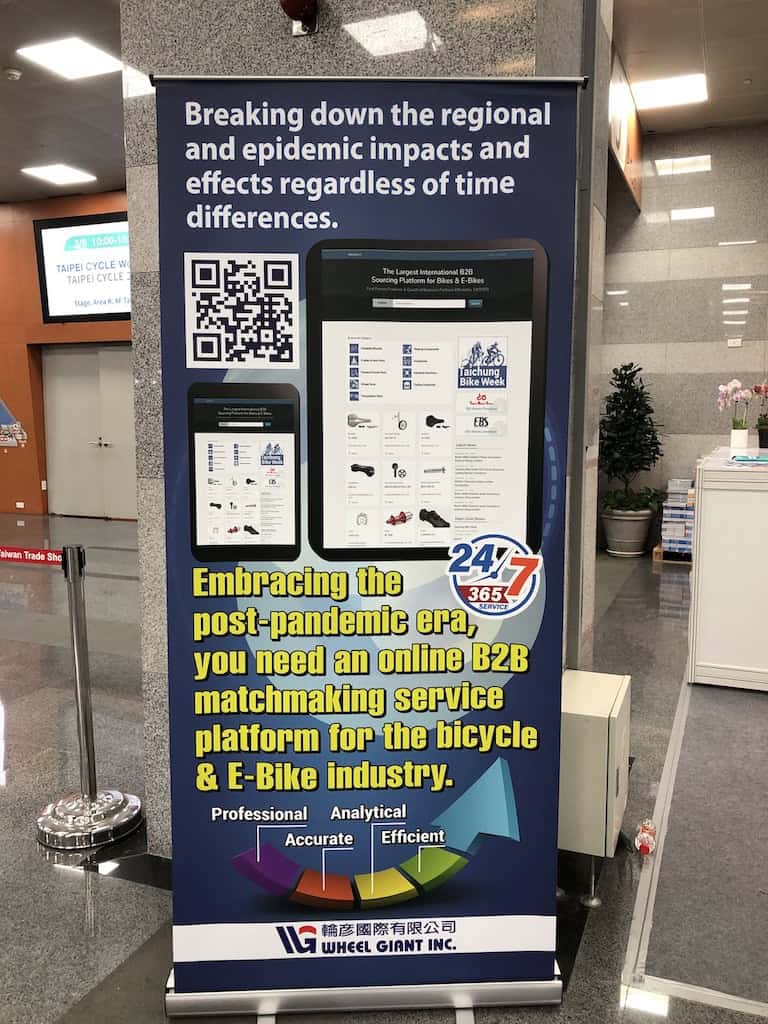
The TBS volume is the more encyclopedic of the two and has been thus more prominent. Their original website-based search database was hard to use—the printed volume was the better option. A CD of each edition was made available.
It does not hurt to have the TBS and TBG close at hand as many suppliers don’t take out a listing in both (although many do).
At the 2024 Taipei Cycle show, Wheel Giant was publicizing their recently vastly upgraded search engine, probably due to the challenge from Bicycle Cluster, a new entrant into the bicycle components search engine range (which we cover next).
The search box is front and center which was a hallmark of Google’s approach to shaking up the online search industry back in 1998—a blank page containing a simple search box without any distractions.

Bicycle Cluster
Bicycle Cluster was set up a few years ago by Critical Cluster Co., Ltd. A former employee of Wheel Giant saw an opportunity to create an online search engine for the bicycle niche, one that really worked.
This search platform ups the game on a number of levels. You can search by company, product, or geographical region. A very useful feature is the ability to compare products side by side, similar to many product comparison engines. Within any product category select 2-3 products you might have shortlisted to compare against each other.
To make full use of the platform you need to sign up. Users register for free while suppliers pay a membership fee based on three tiers.
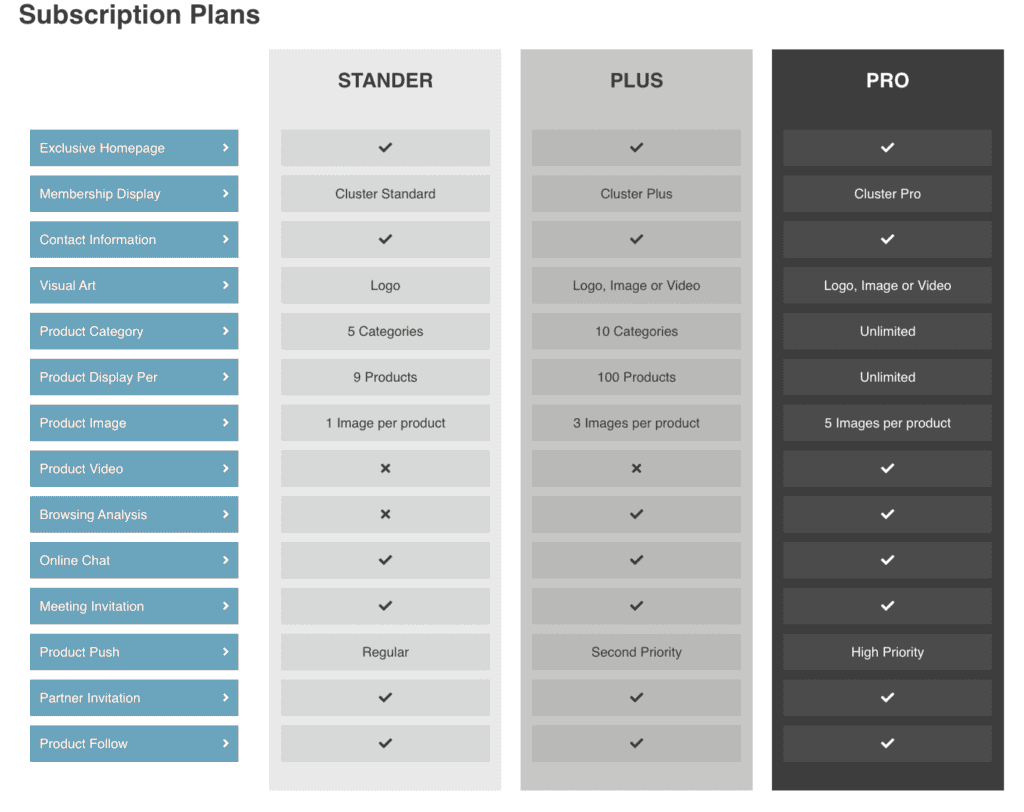
Going beyond mere search engine functions, Bicycle Cluster offers active assistance for potential customers and suppliers looking for exactly the right solution. Critical Cluster’s extensive industry contacts provide a vast wealth of knowledge and contacts to draw upon.
A good design feature is the focus on search: all search functions are clearly visible and easily accessible at the top of the page. The rest of the home page, however suffers from clutter—lots of color and movement which will appeal to some but not to most. Nevertheless, if you launch into a search, then the search is at the center of attention.
TBG, TBS, or Bicycle Cluster?
Advertisers have moved away from TBG and TBS over the last few years. Bicycle Cluster offers an alternative.
For users, having the latest copy of the thick guides at hand does not hurt. They are there if you need them. For advertisers, if the annual cost is included, then maintaining a presence in those volumes makes sense.
Bicycle Cluster has the potential to become the go-to specialized search engine for OE purposes. However, margins are shrinking as OE manufacturing is increasingly commodified.
The result is that legacy manufacturers—particularly bigger firms—see future success in developing their own brands. OBM is the new frontier and by ditching reliance on other brands and forging their own path, these companies also need to forge their own way in marketing and not excessively rely on third party solutions.
Trade Shows
Trade Shows are still vitally important for product and brand discovery. The pandemic taught us that online is no substitute for face-to-face. If you don’t exhibit at a trade show, then an in-person visit is essential if you are in the supply side of the business.
Taipei Cycle experimented with an online version of the show in 2021 and then went hybrid as the physical show was reintroduced. By 2024, the online part had been abandoned. The show was still quiet compared to before the pandemic
Two Types of Customer
There are two types of customer: 1. those who know you 2. those who don’t.
Customers who know you will probably set up a meeting or at the least come straight to your booth. So booth design does not have to cater to them.
If a key reason for you attending a show is to gain new customers, then your booth needs to reach out directly—and powerfully—to passers by.
For Prospects (potential customers who don’t know you)
A lot of really great business walks straight past many booths because no effort in good communication has been made.
You need to treat your booth just like you would an advertisement. And the essence of an effective ad is to reflect the specific need of the customer.
Many booths, particularly the smaller booths, simply display products and let the observer work out what exactly the company’s business is. Of course, most people do not take the time to find out because there are so many booths that look the same.
At a minimum you should aim to create large posters that are easy to read and focus on the benefits of the product they describe—and not just the features.
Pedros bike tools is a well-known brand. But if you did not know them, and were in the market for tools, the PIG diagram will likely stop you in your tracks.
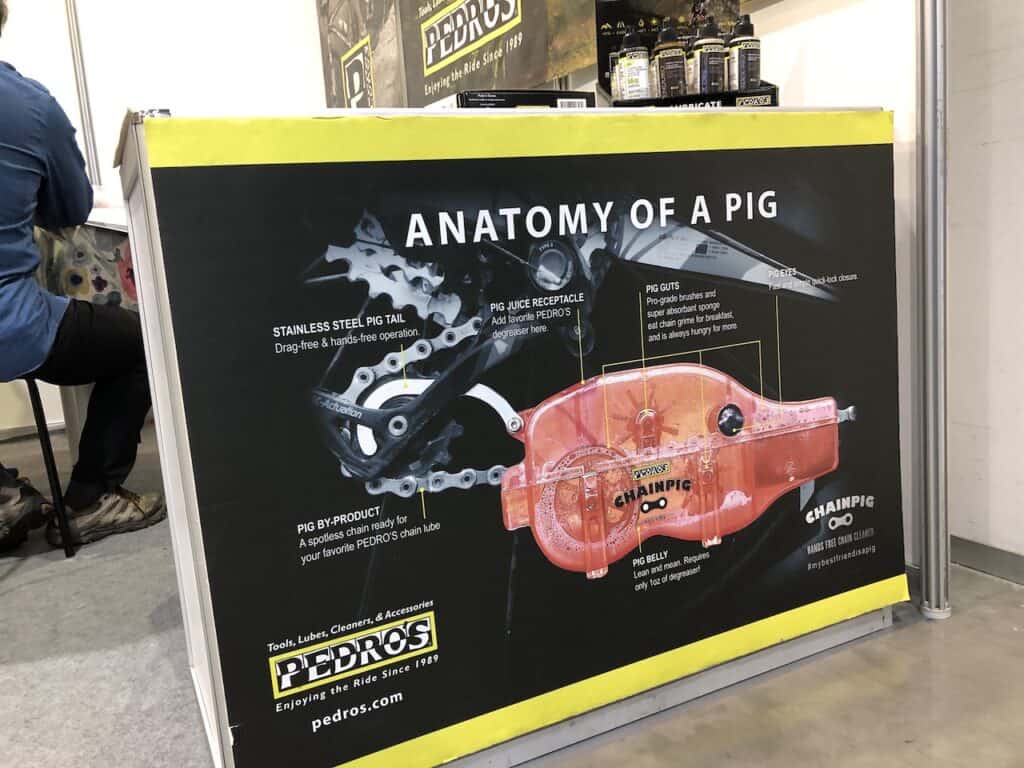
Purely from the perspective of a story, the title “Anatomy of a Pig” is an attention grabber. Functions and benefits (the reason the functions exist) are clearly labelled by employing clearly readable callouts. The color scheme is also important: yellow and red complement black.
Achieving a similar effect is not hard and surely works to bring in traffic that would otherwise pass by—without even seeing the booth.
DIY
How do you Do It Yourself? By making the best use of your website. Every company has a website. But few companies know how to optimize their sites for pages to be found more easily, especially product pages
The currency of the web is much more about relevancy than about size. It is true that in recent years, the pages of large brands tend to be favored in search results in comparison to smaller companies.
And if your presence on the web is not in the form of a company then it will be a little harder—all things being equal—to get your pages favored over those of a bigger rival.
But achieving visibility is absolutely doable if you consistently work at it over time. Here’s an example.
Since we rebuilt the FIRST Components site in 2018 we have been steadily adding content that is useful and interesting for our audience.
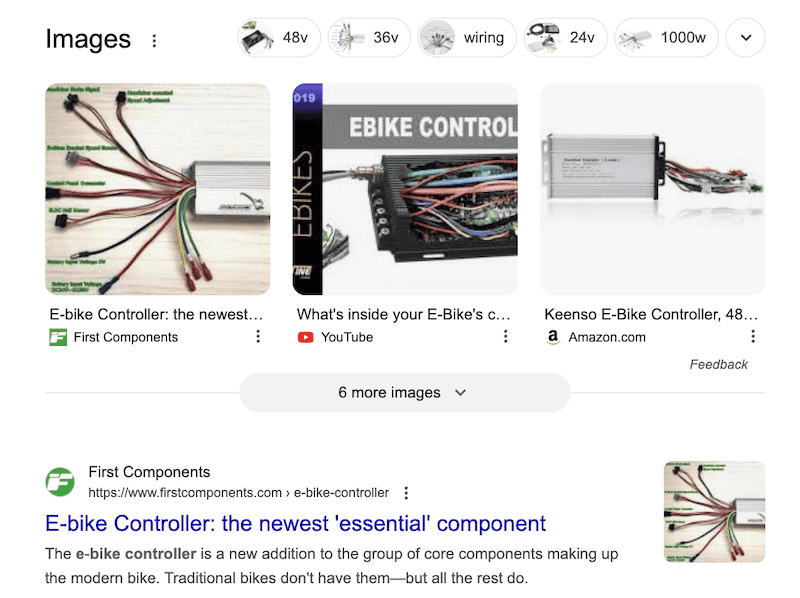
After several years many pages have come to rank in the top search results. Briefly, good optimization stems from keeping a laser focus on a limited range of categories, which for FIRST is simply bottom brackets, cranksets, and headsets.
One off-category product that FIRST also makes is an e-bike controller. The controller’s categorical difference to the staple non-electrical components means an uphill battle to get this product high in the search results.
However, by employing basic on-page optimization techniques together with the overall authority of the content, the page ranks prominently on the 1st page of search results.
Firstly, Google has selected the main image as No.1 in the image carousel. Just beneath is the article’s listing. A surprising result which simply shows that with patience and application, DIY works well.
A key characteristic of the approach is that the marginal cost of articles and optimization decreases over time—the main cost is a one-off payment for the original content, with much smaller maintenance costs distributed over time.
New Directions
New initiatives in search engines dedicated to bike components are aimed at solving a major problem for bike shops and users—how to easily find compatible parts for a particular make and model of bike.
The following examples take two diametrically opposed approaches to solving the problem: one based on AI; one not.
Bikewise.ai
The problem bikewise.ai seeks to solve is that bike maintenance is not a profit center for IBDs. TLC for bikes is low tech and inefficient. Yet without it, there is no bike industry argues Bikewise’s co-founder and CEO, Dan Carle. In his view, the answer is found in making use of big data through the application of Artificial Intelligence.
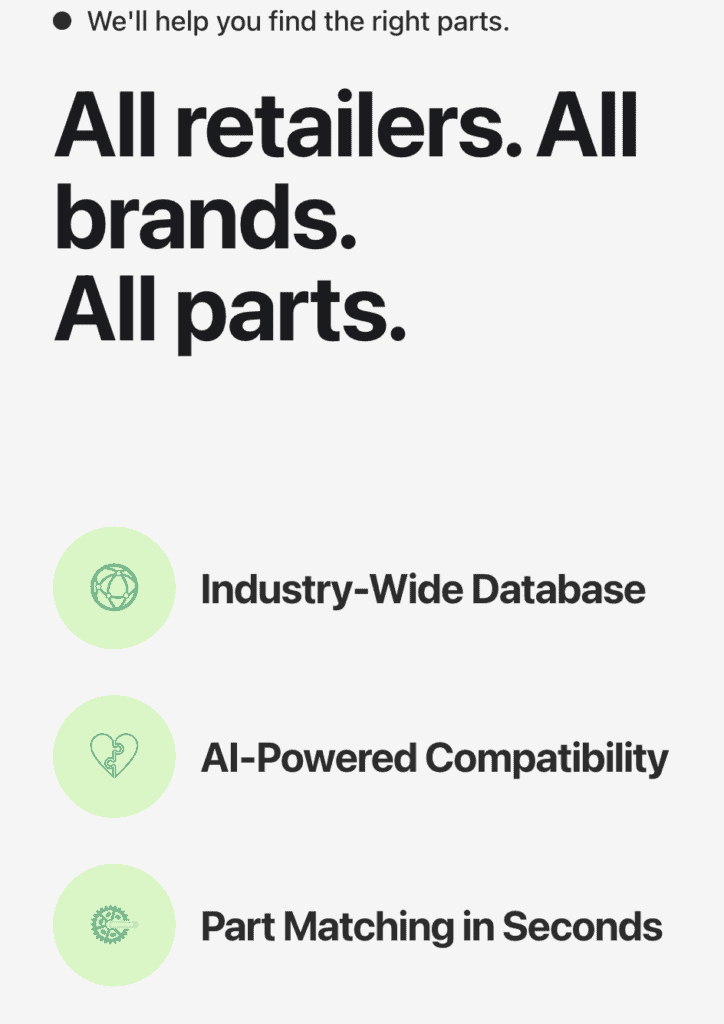
Being able to easily find the complete range of compatible bike parts for a particular bike is the Bikewise goal. It consists of a web-based database powered by AI algorithms into which the user inputs bike brand and model to generate a complete list of compatible parts.
The argument is that time consuming activities that have not been possible in the past because they were too labor-intensive are now possible with AI helping product managers and end users.
And as bikes evolve over time with the tweaks and changes their owners make to them, this dynamic element can be accommodated by adding dynamic compatibility where, for example, if you change a cassette then maybe your derailleur won’t work. Bikewise.ai will tell you which one will.
That’s the aim. Let’s wait and see how it turns out.
Bike Matrix.io
Bike Matrix believes AI is not the answer and have had a working product running on several customer websites since October 2023.
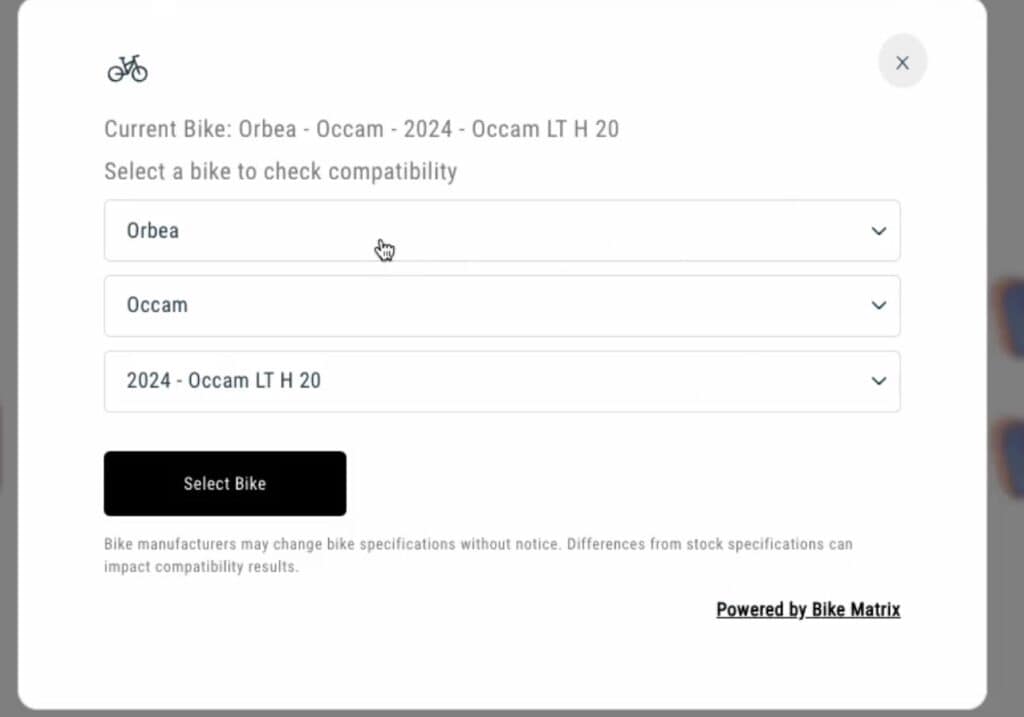
“Bike Matrix is not AI powered because] AI cannot solve the compatibility issue that plagues the bycycle market, without first solving some massive data and technical specification issues, some of which is not published [or]is incomplete… We are likely one of the only companies in the world to have established that AI cannot solve the compatibility issue (not that scraping the web is AI),” said a Bike Matrix spokesperson.
BM’s solution provides a mechanic led, component level compatibility assessment, and not merely a like-for-like replacement. They can tell you what components will work and what will not.
What’s the Upshot?
Companies at the very least should be optimizing the pages of their own websites—DIY is both essential and cost-effective.
90% of web searches are done on Google. If you are easily found there, you’re succeeding. But you need to work at it. Allocate at least 50% of any advertising budget you have to optimizing for search. Then allocate any other budget to third party databases.
To determine which sources work the best, you’ll need to carry out research—have a method to collect and analyze data. Don’t throw money into advertising unless you can measure the ROI. Advertising is not a cost (if done correctly). It’s a profit center.
